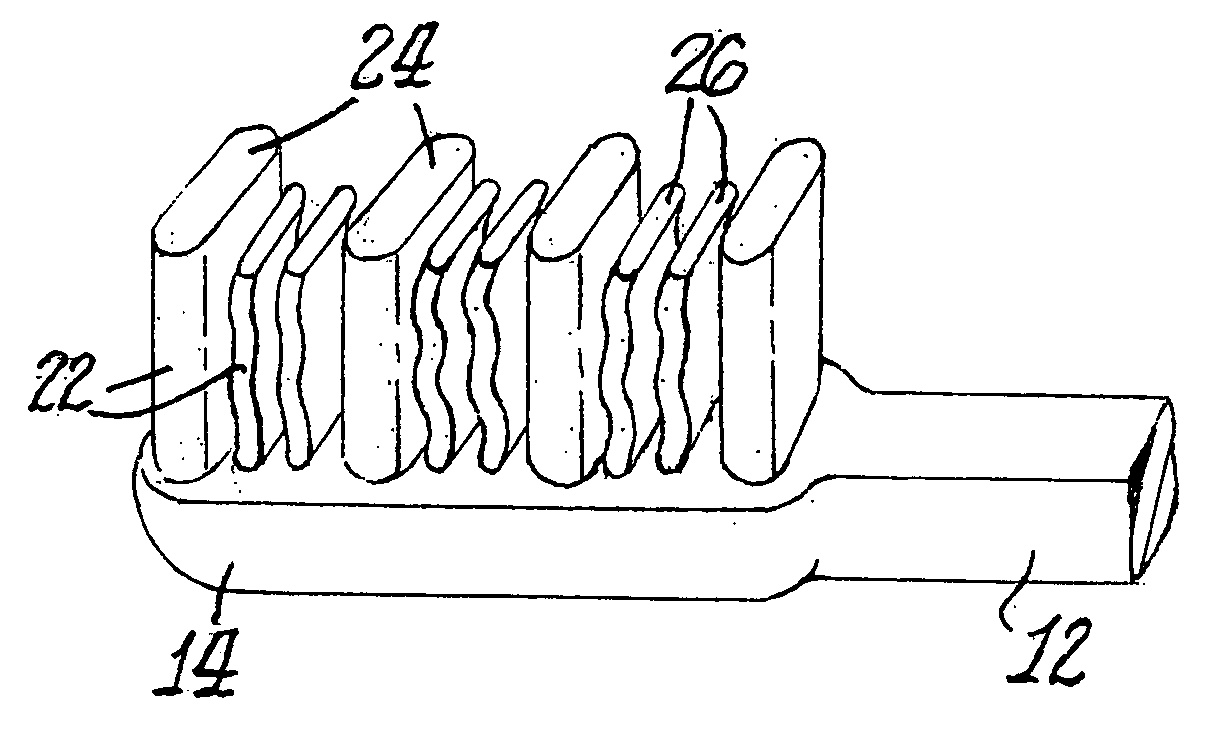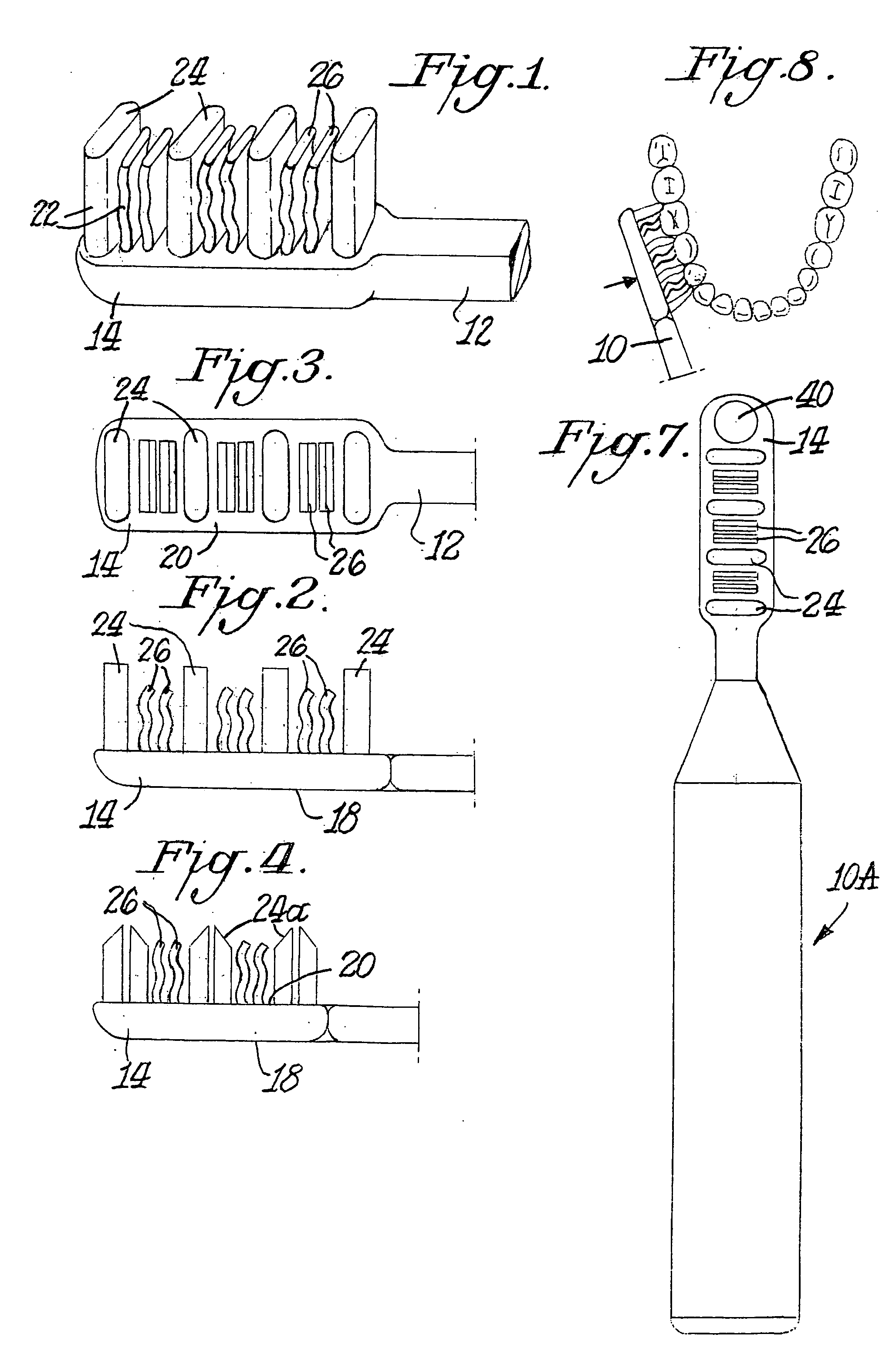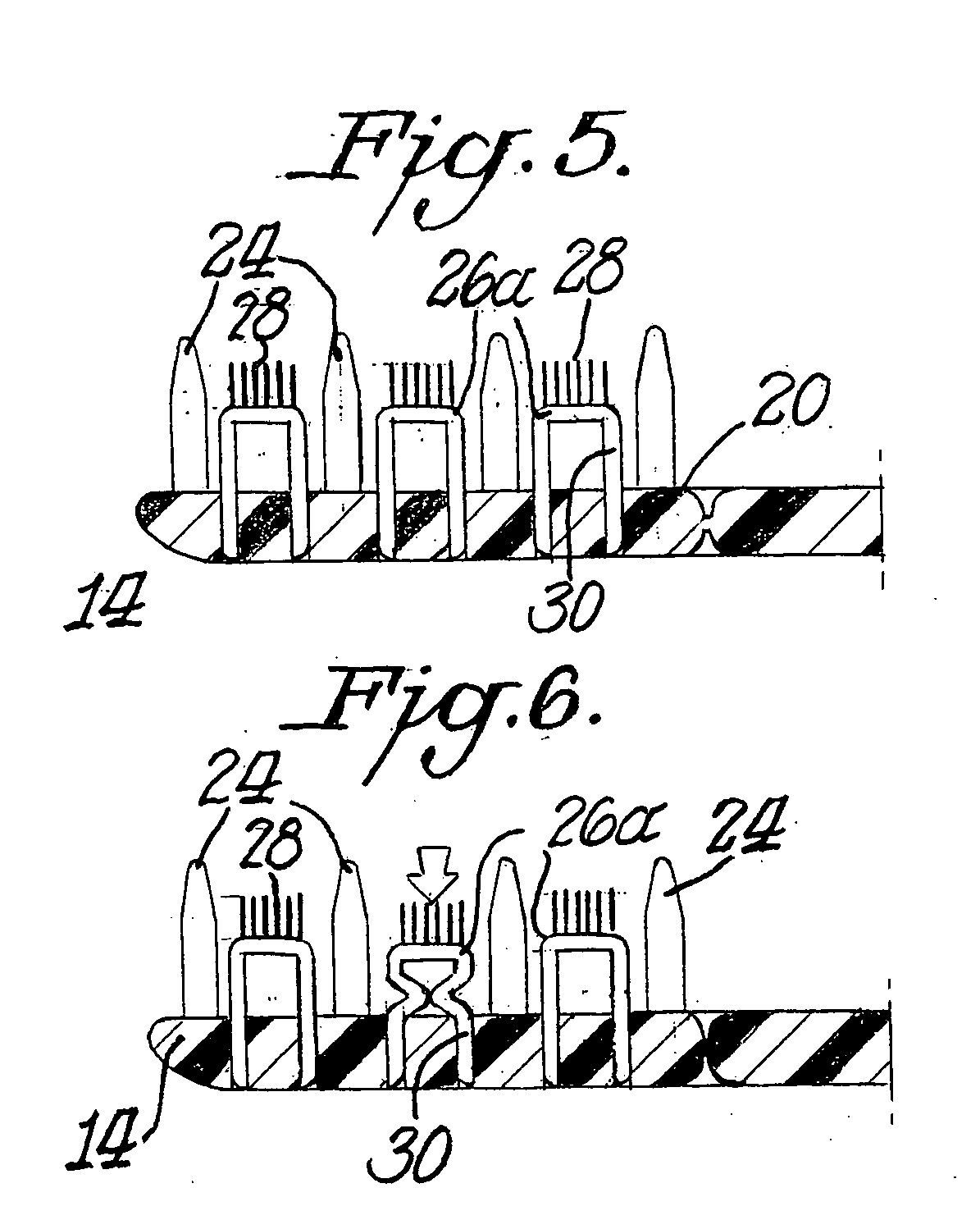Toothbrush
a technology of tooth brush and bristle, which is applied in the field of toothbrush, can solve the problems of keeping other teeth away from the teeth, stiffness of some bristles, etc., and achieve the effect of easy compression under load
- Summary
- Abstract
- Description
- Claims
- Application Information
AI Technical Summary
Benefits of technology
Problems solved by technology
Method used
Image
Examples
Embodiment Construction
[0015]FIGS. 1-4 illustrate a manual toothbrush 10 in accordance with this invention. As shown therein toothbrush 10 includes a handle 12 and a head 14. Handle 12 may include a suitable grip pad made of an elastomeric material. The invention, however, is primarily directed to the arrangement of cleaning elements relative to head 14. As shown in FIGS. 1-4 head 14 has a base portion 18 with an upper surface 20 which forms the base for inserting cleaning elements 22. As illustrated in these Figures, one set of cleaning elements 24 is longitudinally aligned in rows and is relatively rigid relative to a second set of cleaning elements 26 which is shorter and springier.
[0016] The invention is particularly suitable for cleaning elements in the form of strands or bristles attached via anchor free tufting (AFT). In anchor free tufting a plate or membrane is mounted in the head generally by using ultrasonic welding of the plate or membrane to portions of the head. Bristles extend through the ...
PUM
 Login to View More
Login to View More Abstract
Description
Claims
Application Information
 Login to View More
Login to View More - R&D
- Intellectual Property
- Life Sciences
- Materials
- Tech Scout
- Unparalleled Data Quality
- Higher Quality Content
- 60% Fewer Hallucinations
Browse by: Latest US Patents, China's latest patents, Technical Efficacy Thesaurus, Application Domain, Technology Topic, Popular Technical Reports.
© 2025 PatSnap. All rights reserved.Legal|Privacy policy|Modern Slavery Act Transparency Statement|Sitemap|About US| Contact US: help@patsnap.com



